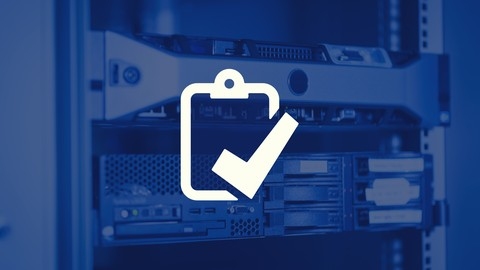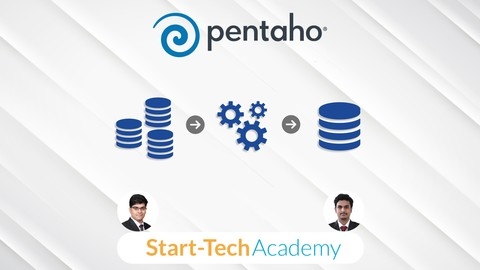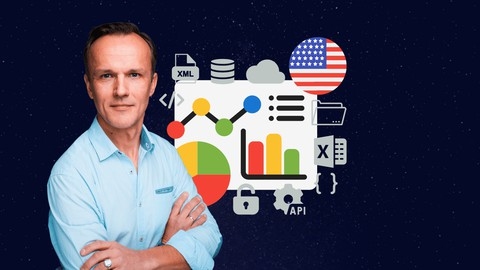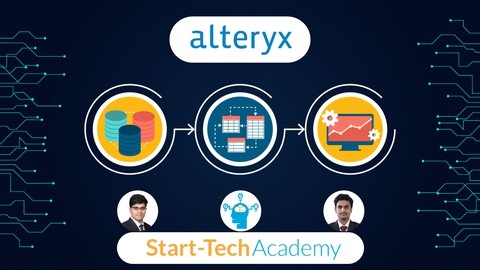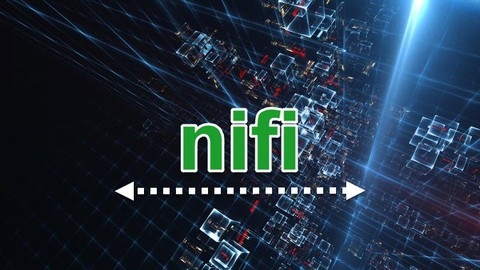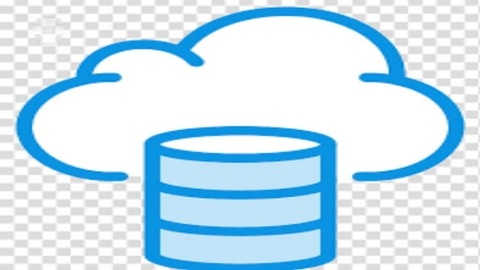ETL (Extract, Transform, Load) is the backbone of modern data warehousing, ensuring that data is accurately and efficiently moved from various sources into a centralized repository for analysis and reporting.
By understanding ETL principles and mastering the tools involved, you can become a crucial player in helping businesses make data-driven decisions and gain valuable insights.
Whether you’re aspiring to be a data engineer, data analyst, or simply looking to expand your data management skills, a strong understanding of ETL is essential.
Finding the right ETL course on Udemy can be a challenge.
With a plethora of options available, it’s easy to feel lost in a sea of courses, unsure which one will truly equip you with the practical skills and knowledge you need.
You’re looking for a course that not only covers the theoretical foundations of ETL but also provides hands-on experience with industry-leading tools and real-world scenarios.
After careful review, we’ve determined that the Data Warehouse ETL Testing & Data Quality Management A-Z course on Udemy stands out as the best overall option.
This comprehensive course delves deep into the intricacies of ETL testing and data quality management, providing a solid foundation for building and maintaining robust data pipelines.
You’ll gain practical experience with database views, data connections, and dashboarding tools, ensuring you have the skills to ensure data integrity and accuracy.
While this is our top recommendation, there are many other excellent ETL courses available on Udemy catering to different learning styles and career goals.
Keep reading to explore our curated list of top-rated courses covering various ETL tools and techniques, allowing you to find the perfect fit for your journey into the world of data integration.
Data Warehouse ETL Testing & Data Quality Management A-Z
This course provides a comprehensive guide to data warehousing ETL testing and data quality management.
You will start by understanding the fundamentals of ETL/ELT processes and data quality dimensions.
The course then dives into building database views to test various data quality rules like completeness, uniqueness, validity, consistency, and integrity.
Next, you will learn to create data quality dashboards and monitoring systems.
Through hands-on exercises, you will build dashboards for completeness, uniqueness, validity, consistency, integrity, and data profiling.
These dashboards will help you visualize and track data quality issues.
The course covers key concepts like database views, data connections, and dashboarding tools through practical exercises.
You will gain experience in designing test cases, implementing data quality checks, and monitoring data health.
By the end, you’ll have a solid understanding of ETL testing and data quality assurance techniques essential for maintaining a robust data warehouse.
ETL Testing: From Beginner to Expert
This course guides you from the basics of ETL testing to an expert level, providing a strong understanding of data warehousing concepts.
You’ll start by exploring data warehouses, including types like data marts, and their relevance in the age of big data.
The course then delves into data warehouse architecture, explaining components like the staging area and its importance.
You’ll then dive into dimensional modeling, a critical aspect of ETL testing.
You’ll learn about fact tables, dimension tables, different schema types (like star schema and snowflake schema), and concepts like slowly changing dimensions.
This knowledge is essential for understanding how data is structured and organized within a data warehouse.
The course then shifts to the heart of the matter – data integration and ETL.
You’ll gain a deep understanding of the extract, transform, and load stages, and the differences between ETL and ELT.
This section also explains the roles involved in a data warehouse project, from business analysts to ETL developers and testers, giving you a holistic view of how ETL testing fits into the broader picture.
You’ll get hands-on experience with Informatica PowerCenter, a leading ETL tool.
You’ll explore its architecture, learn to install and configure it, and dive deep into creating mappings and workflows.
The course covers a variety of transformations within Informatica PowerCenter, teaching you how to use them effectively for data manipulation and cleansing tasks.
You’ll also gain practical experience with the workflow manager and monitor tools, essential for managing and monitoring your ETL processes.
Pentaho for ETL & Data Integration Masterclass 2024 - PDI 9
You want to master the art of ETL and data integration?
This Pentaho course is a great place to start.
You’ll dive deep into the world of PDI, learning how to build powerful data pipelines that can handle any data challenge.
You’ll begin by setting up your PDI environment and getting familiar with the Spoon graphical interface, where you’ll orchestrate your data transformations.
The course will guide you through extracting data from a variety of sources.
You’ll learn how to pull data from simple formats like CSV and Excel files, as well as more complex structures like XML and JSON.
You’ll also learn how to connect to databases like PostgreSQL, writing SQL queries to extract the specific data you need.
Even cloud storage like AWS S3 is within reach, as you discover how to directly access and integrate data from these platforms.
Data cleansing is a crucial aspect of any ETL process, and this course gives you the tools to tackle it head-on.
You’ll discover how to identify and handle missing values, correct inconsistencies, and use techniques like fuzzy matching to find and merge similar data points.
You’ll also master data validation, ensuring your data’s accuracy before it enters your data warehouse.
You’ll explore methods like string-to-integer conversions, reference value checks, and date validation to guarantee your data’s integrity.
The course then leads you to the heart of data transformation, where you’ll learn how to aggregate data, normalize and denormalize it, and leverage PDI’s SQL connection to directly interact with databases.
You’ll gain a solid understanding of data warehousing concepts, learning about facts and dimensions, surrogate keys, and the intricacies of slowly changing dimensions.
You’ll even build your own data mart, a focused data warehouse tailored to specific business needs, by pulling together data from various sources.
Data Integration & ETL with Talend Open Studio Zero to Hero
You’ll begin by setting up a strong foundation, learning how to navigate the Talend interface and grasping core concepts like data types, schemas, and connections.
You’ll quickly jump into hands-on exercises, starting with a simple “Hello World” example and progressing to more complex tasks like reading and writing data to various sources such as files, databases, JSON, and XML.
You’ll then delve into the heart of ETL, mastering the art of transforming data.
You’ll learn how to filter, sort, aggregate, convert, and even join data from different sources using Talend’s powerful components, including the versatile tMap.
The course doesn’t stop there – you’ll also discover data quality techniques to ensure your data is accurate and reliable.
You’ll learn how to remove duplicates, perform interval matching, handle schema checking, and more.
You’ll then explore the world of job orchestration, where you’ll manage and control the flow of your ETL processes.
You’ll master the use of pre-job and post-job actions, loops, triggers, and even delve into system interactions, making your jobs efficient and robust.
You’ll also become proficient in logging, a critical aspect of building and maintaining data pipelines.
You’ll learn how to debug data, test assertions, and log different aspects of your jobs, from data volumes to errors and executions, ensuring you have full visibility into your ETL processes.
Alteryx Masterclass for Data Analytics, ETL and Reporting
You’ll start with an introduction to Alteryx and its interface, ensuring you’re comfortable with the tool before diving deeper.
The course then guides you through data extraction, covering various file formats like CSV, TXT, Excel, and even ZIP files.
You’ll also learn how to extract data from XML files and SQL databases, as well as how to store and retrieve data from cloud storage like AWS S3.
One of the standout features of this course is its focus on data cleansing and improving data quality.
You’ll learn how to use tools like Find and Replace, Data Cleaning, Autofield, and Select to clean and transform your data.
The course also covers merging data streams using the Union tool, which is essential for combining data from multiple sources.
As you progress, you’ll explore techniques for sampling data, such as using the Select Records, Sample, and Random Percent Sample tools.
You’ll even learn about Train-Validation-Test Split sampling, which is crucial for machine learning projects.
Data preparation is another key area covered in the course.
You’ll learn how to use tools like Multifield binning, Tile, Formula, Sort, and Text to Columns to prepare your data for analysis.
This includes tasks like creating customer age categories, applying conditional formulas, sorting data, and splitting product IDs into multiple columns.
Once your data is cleaned and prepared, the course teaches you how to output it and create a datamart by merging tables using the Joining tool.
From there, you’ll dive into analytics and transformation, learning how to use tools like Summarize, Running Total, Crosstab, Transpose, and Count to analyze your data.
But the course doesn’t stop there – it also covers reporting in Alteryx.
You’ll learn how to create interactive charts, format pivot tables, add text and images, and arrange elements using tools like Interactive Chart, Table, Text, Visual Layout, Header, Footer, Rendering, and Layout.
You’ll even learn how to send reports via email using the Email tool.
Finally, the course covers scheduling and automating Alteryx workflows, ensuring you can streamline your data processes and save time.
Throughout the course, you’ll encounter quizzes to reinforce your learning, and you’ll have access to a case study and resources to support your journey.
Apache NiFi Complete Master Course - HDP - Automation ETL
This Apache NiFi course teaches you how to build data pipelines to automate moving and transforming your data.
You start with the basics of Apache NiFi, learning the interface and building simple workflows.
You quickly move to more advanced topics, like configuring processors, managing flow files and attributes, and handling failures.
You then discover how to connect Apache NiFi with other popular technologies.
You’ll use it with Apache Kafka to send and receive messages, MySQL to read and transform data, and HDFS and Hive to work with large datasets.
You also learn how to use NiFi to interact with cloud services like AWS S3 and NoSQL databases like MongoDB.
This course teaches you how to use NiFi’s advanced features.
You’ll manage versions of your workflows with NiFi Registry and build clusters for high availability.
You’ll also learn how to extend NiFi’s capabilities by creating custom processors and controllers using tools like Maven and Eclipse.
This course gives you practical experience, including real-world use cases like extracting data from systems like Ford GoBike and Twitter.
You’ll transform this data and load it into targets like HDFS for storage and Apache Solr for visualization using tools like Banana Dashboard.
Writing production-ready ETL pipelines in Python / Pandas
This course starts with a quick and dirty ETL solution, then progressively builds upon it, teaching you functional programming, object-oriented programming, software testing, and other best practices along the way.
You’ll begin by setting up a virtual environment and connecting to an AWS environment to work with sample data.
The course walks you through reading multiple files, applying transformations, and saving the results to S3 using a basic script.
This initial approach is then refactored into a more modular, functional design to improve code organization and maintainability.
Next, you’ll learn object-oriented programming principles and how to structure your code using classes, methods, and attributes.
The course guides you in setting up a Python project with a proper folder structure, version control with Git, and an IDE like Visual Studio Code.
You’ll implement logging, exception handling, and other essential components for a robust ETL pipeline.
As you progress, you’ll dive into clean coding practices, linting, and unit testing.
The course provides hands-on examples for writing unit tests for various components of the ETL process, such as reading from CSV, writing to S3, and handling metadata.
You’ll also learn about integration testing to ensure the end-to-end pipeline works as expected.
The course covers advanced topics like dependency management with pipenv, profiling and timing for performance optimization, and dockerization for easy deployment.
Finally, you’ll learn how to run the ETL pipeline in a production environment, tying together all the concepts covered throughout the course.
Data Engineering, Serverless ETL & BI on Amazon Cloud
This course teaches you how to build data pipelines on Amazon Cloud using a bunch of cool tools.
You’ll start with AWS Glue, Redshift, and other services to extract, transform, and load data from places like MySQL databases into Redshift.
You’ll even learn how to turn data into cool stories with Quicksight, a data visualization tool.
Don’t worry, the course isn’t all theory.
You’ll learn practical stuff like handling data loads as they come in and making Redshift run faster.
You’ll master different ways to sort and arrange data in Redshift, like using sort keys, to make your queries lightning fast.
Plus, you’ll discover AWS Step Functions to manage complex data tasks using AWS Lambda functions and AWS Glue jobs.
This course goes beyond the basics and dives into data lakes.
You’ll learn to analyze data directly in your data lake using AWS Glue crawlers and Athena.
You’ll also become familiar with Docker and AWS ECR to package and deploy your data processing apps in the cloud.
You’ll even build real-world projects, like transactional systems using AWS Lambda, DynamoDB, and API Gateway.
Finally, you’ll learn Redshift Spectrum, which lets you query data directly from your S3 data lake using Redshift, and Quicksight, a powerful tool for building interactive dashboards and reports.
You’ll even get a taste of Docker, learning how to build and deploy your own data processing solutions in the cloud.
